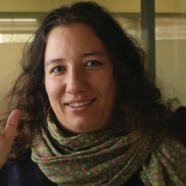
Inbal Goshen, FENS-Kavli Scholar
Edmond and Lily Safra Center for Brain Sciences (ELSC), The Hebrew University, Israel
When aiming to solve a big problem (like the representation and treatment of women in neuroscience) one often looks for big solutions. This, in turn, can seem like an overwhelming task, best dealt with by ignoring it… An optimal solution will be easy to implement, require minimal effort, and have a great impact. Surprisingly, there is in fact a simple step a person in a neuroscience institute can take, requiring very little work and having a great transformative potential on the local young students.
One of the consequences of the underrepresentation of women in neuroscience is a shortage in role models for the younger generation of female graduate students and postdocs. Naturally, long-term changes in hiring policies are necessary to permanently correct this situation, but this process will take place on a time scale of decades, and will have no effect on current students. What then, can be done immediately to expand their exposure to successful role models? My own local solution was to ask all the women scientists invited to present their work at the Edmond and Lily Safra center for Brain Sciences (ELSC) weekly seminar to meet with our graduate students right after the seminar.
This initiative has several advantages: A) Immediate implementation. The seminars (with the associated scheduling and speaker’s travel and expenditure) are already managed by the administrative staff, and all you have to do is write an email asking for one hour of the lecturer’s time to be spent with the students. In my experience so far, my requests were answered immediately and with enthusiasm without exception, with an acceptance rate of a hundred percent. B) The students are first exposed to the excellent science – and only then to the hurdles that were met on the way to achieving it. Thus, they see the speaker first as an investigator and only then as a woman – a prerequisite for a good role model! C) Intimate setting. As opposed to power hours in conferences, the local students are familiar with each other, allowing more room to express personal concerns. I did not consider this when launching the initiative, but it was repeatedly pointed out to me by our guest speakers. D) Flexible format. No specific format is imposed on either the mode of presentation or its duration. Some of our guests prepared slides, some chose a free conversation. Some meetings were finished in less than an hour, and some lasted way longer. All were informative, supportive and encouraging!
I encourage every woman scientist wanting to promote female students in her scientific environment to implement the role model initiative at her institute, and start changing reality for the better right now.